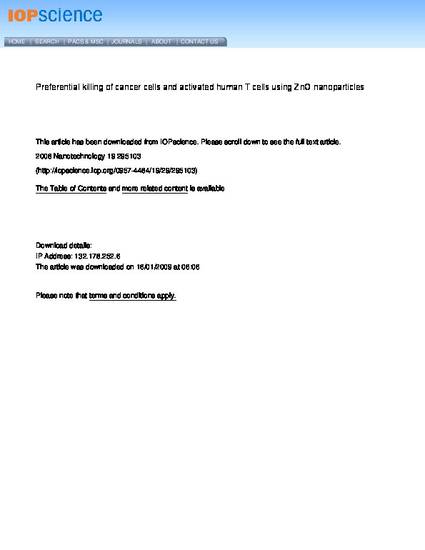
Nanoparticles are increasingly being recognized for their potential utility in biological applications including nanomedicine. Here we examine the response of normal human cells to ZnO nanoparticles under different signaling environments and compare it to the response of cancerous cells. ZnO nanoparticles exhibit a strong preferential ability to kill cancerous T cells (∼28–35 ×) compared to normal cells. Interestingly, the activation state of the cell contributes toward nanoparticle toxicity, as resting T cells display a relative resistance while cells stimulated through the T cell receptor and CD28 costimulatory pathway show greater toxicity in direct relation to the level of activation. Mechanisms of toxicity appear to involve the generation of reactive oxygen species, with cancerous T cells producing higher inducible levels than normal T cells. In addition, nanoparticles were found to induce apoptosis and the inhibition of reactive oxygen species was found to be protective against nanoparticle induced cell death. The novel findings of cell selective toxicity, towards potential disease causing cells, indicate a potential utility of ZnO nanoparticles in the treatment of cancer and/or autoimmunity.
Available at: http://works.bepress.com/kevin_feris/5/
